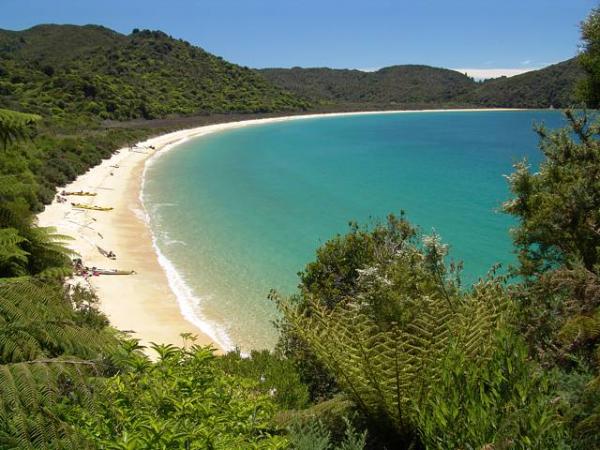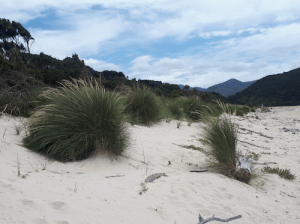
The name has been analysed by Peart to mean ‘to run hurriedly (tahuti) along the beach (one)”. However, it seems much more likely to be a composite of one-tahu-ti. Tahu means to burn or cook, and ti is, of course, the cabbage tree. One of the potential meanings is that cabbage trees were burnt on the beach as signals or as food. However, the problem is that there are no cabbage trees (ti kouka) present anywhere in the eastern part of the Park. Once again the infertile soil prevents this species from establishing and only the bush cabbage tree, ti ngahere, is present, although never in particularly large numbers. It would take some effort to collect enough ti ngahere leaves for a large fire or enough underground rhizomes as a sustained food item. However, the high flammability of ti leaves does suggest the possibility of collecting, drying and storing them for instant fire signals.
It is possible that one or a few cabbage trees were once present, either naturally or planted as a marker as they are in many places in New Zealand. Māori used cabbage trees to mark fishing grounds, river crossings, burial sites and tribal boundaries. In fact the only cabbage tree along the Tasman Coast grows at Abel Head, probably a former pa site and burial ground: it is clearly a marker. It is potentially possible, given the rarity of cabbage trees in the region that the actual name is One-tahi-ti, a place with only one or a few cabbage trees, and therefore a notably distinct place easily recognized from offshore. In fact the dune at Onetahuti is distinctive in growing rimu, an uncommon sand plant.



